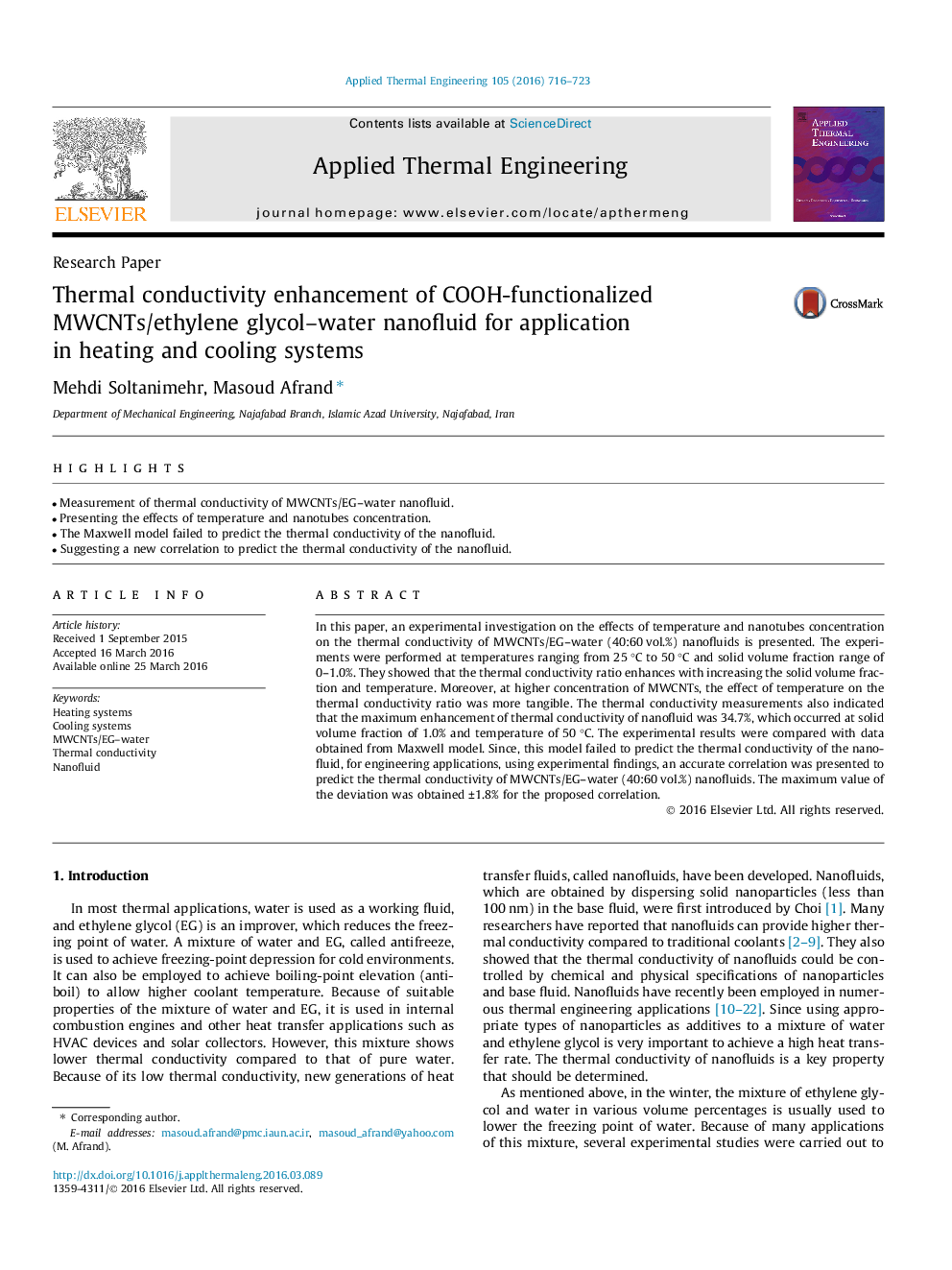| Article ID | Journal | Published Year | Pages | File Type |
|---|---|---|---|---|
| 644624 | Applied Thermal Engineering | 2016 | 8 Pages |
•Measurement of thermal conductivity of MWCNTs/EG–water nanofluid.•Presenting the effects of temperature and nanotubes concentration.•The Maxwell model failed to predict the thermal conductivity of the nanofluid.•Suggesting a new correlation to predict the thermal conductivity of the nanofluid.
In this paper, an experimental investigation on the effects of temperature and nanotubes concentration on the thermal conductivity of MWCNTs/EG–water (40:60 vol.%) nanofluids is presented. The experiments were performed at temperatures ranging from 25 °C to 50 °C and solid volume fraction range of 0–1.0%. They showed that the thermal conductivity ratio enhances with increasing the solid volume fraction and temperature. Moreover, at higher concentration of MWCNTs, the effect of temperature on the thermal conductivity ratio was more tangible. The thermal conductivity measurements also indicated that the maximum enhancement of thermal conductivity of nanofluid was 34.7%, which occurred at solid volume fraction of 1.0% and temperature of 50 °C. The experimental results were compared with data obtained from Maxwell model. Since, this model failed to predict the thermal conductivity of the nanofluid, for engineering applications, using experimental findings, an accurate correlation was presented to predict the thermal conductivity of MWCNTs/EG–water (40:60 vol.%) nanofluids. The maximum value of the deviation was obtained ±1.8% for the proposed correlation.
